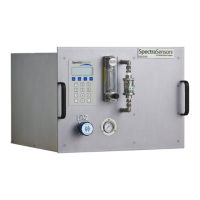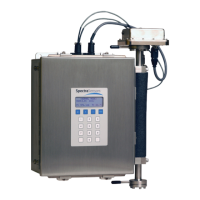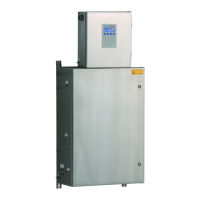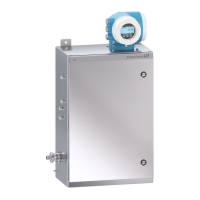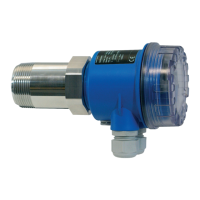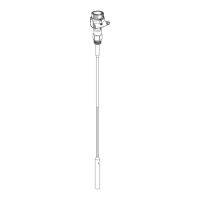Equipment Installation
Safety Manual 3
–5
Ventilation Requirements
Instruction for connecting ventilation to the SS2100i-1 analyzer is provided in
the system drawings that accompany the equipment.
Inspecting the Analyzer
There are three grades of inspection; visual, close and detailed. Visual and
close inspections can be performed with the analyzer energized. Detailed
inspections generally require the equipment to be isolated. SpectraSensors
recommends, at a minimum, a visual inspection to be performed after
installation to reinforce understanding that the product is installed to
manufacturer specifications and to the appropriate standards.
The visual inspection should not be expected to reveal faults of a random
nature, such as loose connections, but should be performed to monitor the
effect of environmental conditions. Some of the key elements to consider
include:
• Extremely low or high temperatures
• Pressure conditions
• Corrosive atmosphere
• Vibration, mechanical impacts, friction or abrasion
• Wind
• Painting processes
• Solar radiation
• Chemicals
• Water and moisture
• Dust and dirt
• Plants, animals, insects
The corrosion of metal, or influences of chemicals on plastic or elastomeric
components, may affect the type and degree of ingress protection of the
equipment. If the enclosure materials begin to exhibit signs of a corrosion,
notify the responsible parties so that the enclosure can be treated with the
appropriate protective coating as a corrosive protection.
If the equipment is subject to vibration, notify the responsible party so that
special care can be taken to ensure that all bolts and cable entries remain tight.
Flameproof enclosure - Protection type “d”
When reassembling and/or working on the flameproof enclosure, perform a
thorough visual inspection to confirm all joints are cleaned and may be lightly

